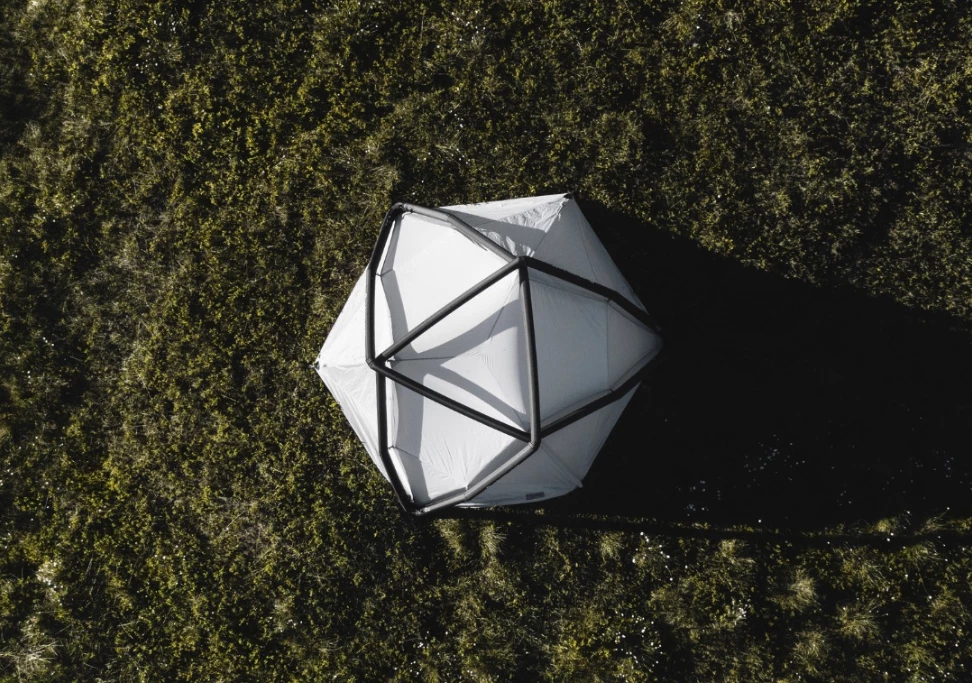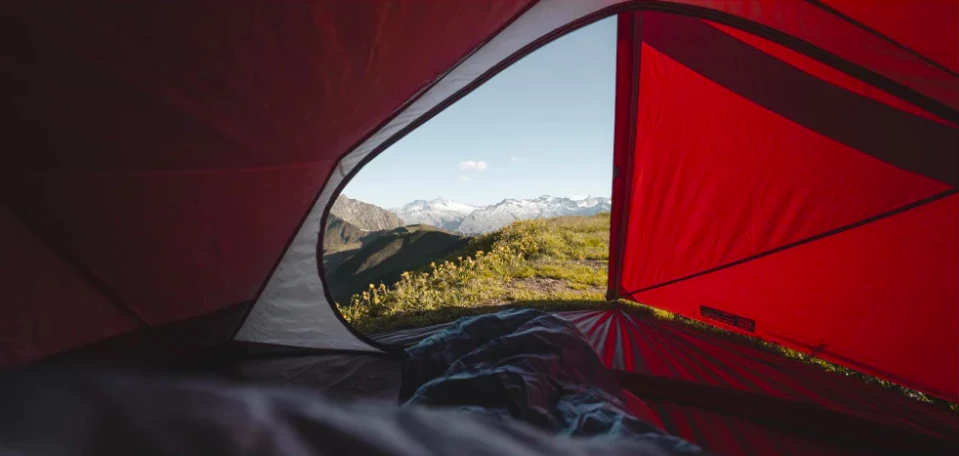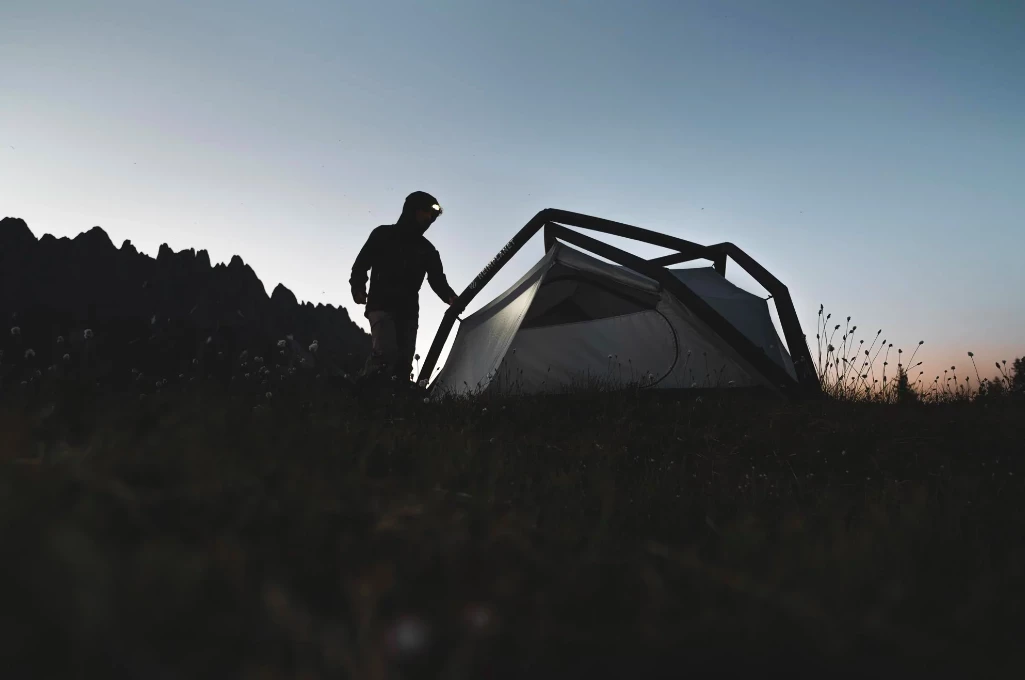The latest member of a Heimplanet family of tents built to "unroll, inflate & done!" is designed specifically for ambitious twosomes who like to be well-prepared. The new Kirra tent is born from the latest evolution of Heimplanet's well-established inflatable geodesic design. It's lightweight, plenty stable in three to four seasons of weather, and roomy enough to comfortably sleep two people, a child and whatever gear they brought along.
Heimplanet set out to split the difference between its 1-/2-person Fistral bike/backpacking tent and its original Cave, a roomier but heavier 2-/3-person tent. The team ended up above and beyond the objective, creating a tent that weighs a full kilogram (2.2 lb) less than the Cave while delivering more interior floor space along with a roomy vestibule that keeps muddy boots and backpacks under its protective wing.
Heimplanet completed this challenge by reconfiguring the Inflatable Diamond Grid (IDG) that serves as the exo-frame design behind all its tents. It wasn't exactly brave, new territory, as the company has designed different IDG geometries for each new tent it's launched, but it seems to have found a particularly functional setup with the Kirra.

While the Cave uses a five-point star-shaped exo-frame to hold up its fabric, and the Fistral has a much simpler X-style frame, the Kirra's triangular frame lands right between the two in terms of complexity while also eliminating the lower ground-level poles that the Cave includes. Heimplanet says that the design is more efficient, creating a stable structure while cutting the fat.
The Kirra weighs in at 3.8 kg (8.4 kg) compared to the 4.8-kg (10.6-kg) Cave, without losing any interior space. In fact, according to the respective spec sheets, it gains space, offering a total footprint of 5.2 sq m (56 sq ft) and an inner tent footprint of 4.2 sq m (45 sq ft), compared to the Cave's 4.8-sq m (52-sq ft) total footprint and 3.7-sq m (40-sq ft) inner tent floor.
Heimplanet tents feature a dual-wall construction with an outer rainfly and inner tent, hence the two different floor areas. In the case of the Kirra tent, the front rainfly serves as a roomy vestibule for storing gear campers don't necessarily want to sleep next to.

Compared to the 2.9-kg (6.4-lb) Fistral, the Kirra is nearly a kilogram heavier but with more space over the 4.3-sq m (46-sq ft) outer/2.9-sq m (31-sq ft) inner footprint dimensions the Fistral offers. The Kirra packs down to the same 40 x 32 x 23 cm (16 x 12.6 x 9 in) as the Cave, while the Fistral goes smaller at 38 x 20 x 20 cm (15 x 8 x 8 in).
Inflatable tent design tends not to result in ultralight weights, but it does make for easy, straightforward setup. Heimplanet's multi-chamber structure inflates in one step but isolates leaks to individual sections to maintain stability in the event of damage. The multi-chamber configuration is also meant to make for easier repair.
The Kirra benefits from the complete 2022 revamp Heimplanet applied across its lineup, a little something it coined the "Great Makeover." After rethinking materials and design, the company applied a hardwearing but lighter high-tenacity 40D polyester double-ripstop construction to its rainfly, adding tear resistance to the UV-resistant, hydrophobic outer wall. The 40D flysheet can be rolled up slightly with integrated elastic hooks to boost air circulation through a chimney effect that works in conjunction with the adjustable upper vents.

The Kirra launched this week in the three color options that Heimplanet now offers for all its tents: classic white, a green "Cairo camo" and a red 4-Season option meant to pop against snow. The 4-Season version also has a slightly beefed-up construction for winter use. Kirra pricing starts at €849 (approx. US$865).
Source: Heimplanet







